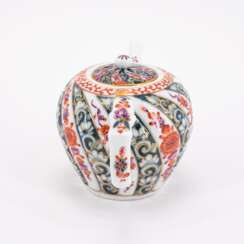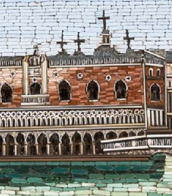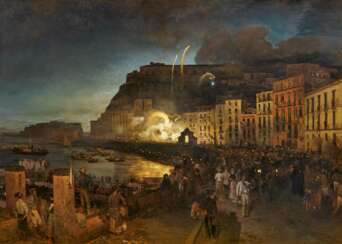east germany

Edgar Hofschen was a German artist.


Edgar Hofschen was a German artist.


Edgar Hofschen was a German artist.


Edgar Hofschen was a German artist.

.jpg)
Josef Albers was a German-born artist and educator. The first living artist to be given a solo shows at MoMA and at the Metropolitan Museum of Art in New York, he taught at the Bauhaus and Black Mountain College, headed Yale University's department of design, and is considered one of the most influential teachers of the visual arts in the twentieth century.
As an artist, Albers worked in several disciplines, including photography, typography, murals and printmaking. He is best known for his work as an abstract painter and a theorist. His book Interaction of Color was published in 1963.

.jpg)
Gerhard Marcks was a German artist, known primarily as a sculptor, but who is also known for his drawings, woodcuts, lithographs and ceramics.


Lyonel Charles Adrian Feininger was an American-German artist renowned for his unique integration of Expressionism, Cubism, and Bauhaus principles. His body of work, which spans several critical decades in modernism's development, is celebrated for its distinctive blend of architectural and nautical motifs, articulated through planar shifts and jagged lines of Cubism, with a vibrant Orphist color palette.
Lyonel Feininger's journey as an artist began in earnest when he was 36, becoming a pivotal figure in various German expressionist groups and a founding member of the Bauhaus, where he led the printmaking workshop. His art, which also includes significant contributions to caricature and photography, explores the intricate relationship between humanity and industrialization, evident in his depictions of architectural and mechanized forms.
His work was subject to Nazi criticism, being labeled as "degenerate," which led to his return to the United States, where he continued to evolve his artistic style. Posthumously, Lyonel Feininger's art has been the focus of several retrospectives, and his pieces, like "Jesuits III," continue to fetch high figures at auctions, underscoring his lasting impact on the art world.
Notably, Lyonel Feininger's "Cathedral" woodcut, representing the Bauhaus's utopian vision, remains one of his most iconic works, symbolizing the integration of art and craftsmanship with its avant-garde yet traditional approach. His legacy is further carried by his sons, Andreas and T. Lux Feininger, who also made their marks in the arts.
For collectors and art and antiques experts, Feininger's work represents a fascinating intersection of various art movements and a testament to the enduring nature of expressive and innovative artistry. To stay updated on new product sales and auction events related to Lyonel Feininger, consider signing up for updates, ensuring you're informed about the latest opportunities to engage with his enduring legacy.




Norbert Bisky is a German artist based in Berlin. He is one of the most important representatives of a new figurative painting in the 21st century.


Oswald Achenbach was a German painter associated with the Düsseldorf school of painting. Though little known today, during his lifetime he was counted among the most important landscape painters of Europe. Through his teaching activities, he influenced the Kunstakademie Düsseldorf. His brother, Andreas Achenbach, who was twelve years older, was also among the most important German landscape painters of the 19th century. The two brothers were humorously called "the A and O of Landscapes" (a reference to their initials matching a common German reference to the Alpha and Omega).


Sigmar Polke was a German painter and photographer.
Polke experimented with a wide range of styles, subject matters and materials. In the 1970s, he concentrated on photography, returning to paint in the 1980s, when he produced abstract works created by chance through chemical reactions between paint and other products. In the last 20 years of his life, he produced paintings focused on historical events and perceptions of them.


Erich Heckel was a German painter and printmaker, and a founding member of the group Die Brücke ("The Bridge") which existed 1905–1913. His work was part of the art competitions at the 1928 Summer Olympics and the 1932 Summer Olympics.


Pierre Subleyras was a French painter renowned for his work during the late Baroque and early Neoclassical periods, mainly active in Italy. Born on November 25, 1699, in Saint-Gilles-du-Gard, France, Pierre Subleyras moved to Rome in 1728 after winning the French Academy's grand prix, a scholarship that allowed him to study in the city. In Rome, he created several significant works, including "Christ's Visit to the House of Simon the Pharisee" and "The Mass of St. Basil," which are celebrated for their detailed depiction and emotional depth.
Pierre Subleyras's paintings were appreciated for their religious themes and portraiture, with his work "The Mass of Saint Basil" being one of his most famous pieces, showcasing his skill in depicting complex religious scenes with emotional resonance. The Metropolitan Museum of Art provides a detailed analysis of "The Mass of Saint Basil," highlighting its historical context and the technical aspects of Subleyras's painting style.
For collectors and experts in art and antiques, Pierre Subleyras's works offer a glimpse into the transition between the Baroque and Neoclassical periods, reflecting the cultural and artistic shifts of the 18th century. His paintings can be found in various prestigious museums, including the Louvre and the State Hermitage Museum.
To stay updated on news and events related to Pierre Subleyras and his works, consider subscribing for updates. This way, you'll receive notifications about new product sales and auction events featuring Pierre Subleyras's art, ensuring you don't miss out on opportunities to engage with the legacy of this influential painter.







































































